Bench Press Wrist Position: All You Need to Know
Bench presses are one of the most popular upper-body exercises. They require basic equipment found in any gym and are easy to pick up — but also easy to mess up.
Bench press hand position is a common discussion topic. Finding the ideal bench press wrist position for you is a crucial element to safe and healthy benching, which can contribute to better performance. This article will help you do just that.
Correct Bench Press Wrist Position – There isn’t a universal bench press wrist position. Barbells are standardized, but we all have differing anthropometry. The ideal bench press grip spread is around 1.6-2 times our shoulder width, with elbows spread between 45-70 degrees, and wrists kept neutral the entire time.
Why Is Proper Wrist Position Important In The Bench Press?
The proper wrist position for bench press will quite literally make or break the exercise. Our wrists are a complex web of bones, ligaments, tendons, veins, and muscles. With so many small parts connected and moving, many things can go wrong: sprains, strains, fractures, etc. Keeping the wrist in a neutral position during press exercises is crucial for preventing injury and long-term wrist health.
When your wrists are neutral, the force generated by your muscles is efficiently transmitted from the hands and onto the barbell. This not only increases your strength but also helps with stability throughout the exercise. Conversely, improper wrist alignment can lead to discomfort, strain, and potential long-term joint issues.
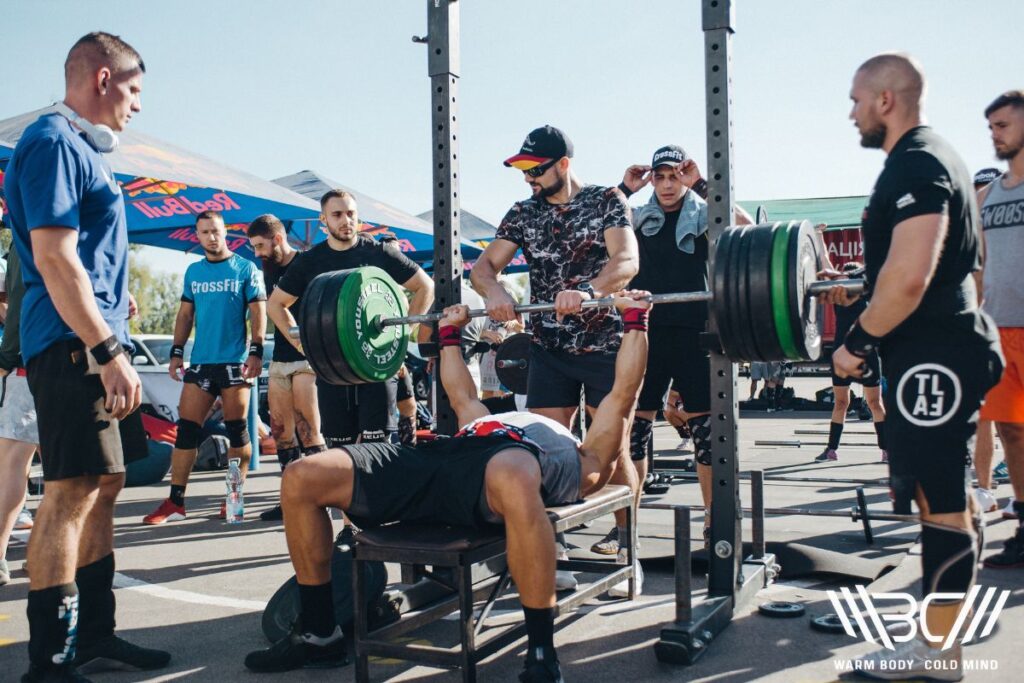
Meanwhile, the correct grip will allow you to “break the bar” — apply force as if to snap it like a twig, solidifying stability. On top of that, we don’t need to explain the damage that could be caused by your wrists failing and the barbell dropping. Having your wrist too straight can result in putting weight of the bar not fully on your hands, but more on your thumbs, which can result in slipping the barbell and falling straight on your chest.
Wrist Anatomy During Bench Press
Before we find our ideal bench press wrist placement, it’s helpful to understand how our wrists work when bench pressing. A surprising number of beginner mistakes stem from misunderstanding the mechanics of the exercise.
When gripping a barbell from underneath, it seems natural to extend your wrist backward and create a sort of “hook” with your palm. However, doing this will cause the majority of the barbell pressure to push your wrist even further back, which can cause all kinds of problems, from discomfort to injury.
Instead, the wrist should be kept neutral at all times, with only the bottom of our palm and thumb supporting the barbell. Furthermore, the line between the wrists and elbows should be straight, allowing the two forearm bones, the Radius and the Ulna, to carry the brunt of the weight.

Cotton Weightlifting Wrist Wraps
Discover unparalleled wrist support with Warm Body Cold Mind cotton wrist wraps.
How To Keep Your Wrist Neutral When Benching?
Maintaining proper wrist alignment is one of the first things to learn about bench pressing. Here are some steps to take to ensure your wrist is kept right when benching:
1. Grab From Underneath
When setting up for the bench press, grip the barbell from underneath with your palms facing away. Keep your wrists neutral, then wrap your fingers over the top and tuck your thumb to close the fist.
2. Use Your Thumb
Some people, when they first start benching, forget to use their thumb. Instead, they keep it loose, making the whole grip shaky. Not without a reason it’s called – suicide grip… The thumb plays a crucial role in grip strength. It needs to be wrapped firmly around the barbell when benching.

3. Align Your Elbows
Aim to keep your elbows at an angle between 45 and 70 degrees relative to your torso. This helps engage the chest muscles effectively while minimizing unnecessary strain on the shoulder joints.
The ideal angle will depend on your shape and size, as well as the type of barbell you’re using. Experimenting with hand position and elbow angle can help you find the best felt alignment over time – it will come naturally at some point. As you lower the barbell, your elbows should naturally travel down, rather than flare out.
4. Mind Your Weight
Going for personal records is cool, but doing the exercise correctly is cooler — on top of being safer. One of the easiest ways to hurt your wrists when benching is using too much weight. You’ll find it difficult to balance, which will cause your arms to shake and the barbell to roll in your wrist.
Subscribe!
The latest reviews of must-have home gym training equipment, apparel, and supplements that will enhance your performance and bring you new results.
Common Bench Press Wrist Position Mistakes
Do you notice your wrists fail when benching? Maybe you feel a tingle or even pain inside them? Then there’s a good chance you’re mispositioning them. Here are the most common bench press wrist placement mistakes we see at the gym:
1. Bad Bench Setup
One of the most common beginner mistakes when assessing your bench press hand position happens before you even lie on the bench and grip the barbell. Before you start to bench press, it’s important to get your equipment set up properly.
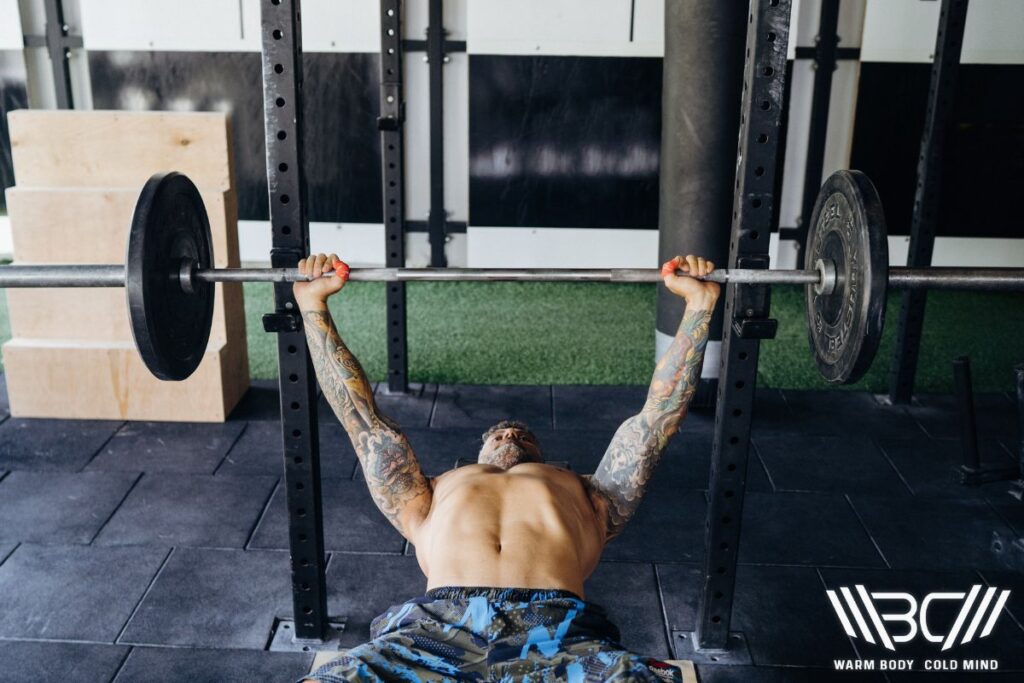
Regardless of what type of setup you’re using (the type of racking system and workout bench you have), start by racking the barbell and aligning it evenly from both sides. Next, slide the bench underneath the barbell so that, when you lie down and gaze ahead, your face should pass the barbell and your shoulders should be roughly in line with the j-cups (uprights/racking arms).
If your workout bench comes with a designated headrest, use it as your reference. In case it doesn’t, it may require a few adjustments, but be sure to take this step. Finally, take a step back and make sure the bench is centrally aligned as well.
Once you lie down, the barbell needs to hover from a distance where you can safely and correctly rack it on and off. If the barbell is racked too low, it can lead to excessive bending at the elbow and wrist when pushing up, resulting in unnecessary strain on the joints, or unnecessary “rep” especially when lifting close to 1RM.
Additionally, if the barbell is racked too high, you might not be able to generate enough force to re-rack it, creating a possibly dangerous situation.
The ideal racking distance between you and the barbell is one where you can quickly and efficiently gather enough force to lift it off and put it back down without losing arm stability. For most people, the perfect spot is when the elbows are slightly below full extension before liftoff, while the shoulder blades are already retracted.
That said, if you struggle to find the perfect height — for example, you can’t find the best fit between two racking levels — keep in mind that having it lower (closer to you) is better than having it too high.
2. Gripping From The Top Down
The second mistake commonly made by beginners is approaching the barbell incorrectly with your hands. More specifically, approaching your grip from the top down, instead of from the bottom up. It is not the problem itself but can potentially result in the wrong wrist position.

When starting to bench without proper guidance, many people adjust their grip by grabbing the barbell from the top with their fingers and then rotating the wrist outward along the bar, as if starting a motorcycle.
This is a possible trap because, when you bend the wrist like that, it twitches your arm muscles, giving you a false sense of readiness. It can result in rolling the barbell inward deeper into your palm, causing the wrist to flex to balance things out, putting stress directly on the joint.
3. Wrong Grip Width
In bench pressing, changing the grip width impacts muscle engagement. A narrow grip emphasizes the triceps and inner chest. Meanwhile, a wide grip targets the outer chest and shoulders. Keep this in mind to make sure you have the right grip width for your desired workout outcome. Remember that gripping the barbell too wide can defeat the purpose of the exercise and makes the structure of the lift more unstable.
An unstable lift can lead to the barbell shaking and rolling in your palm, which will strain your wrist but also result in shoulder injury ( or problems with shoulder in the future). Once you get the handle of your bench press, you can start experimenting with grip width for targeting different muscles.
How to Fix Poor Wrist Positioning While Bench Pressing?
People who have poor wrist posture when benching, typically learn it the wrong way to begin with. Luckily, it’s easy to correct. Here are some tips to help you fix poor wrist positioning when benching:
1. Find Your Grip Width
As briefly touched upon in previous sections, there isn’t a universal hand placement for bench press exercises. Instead, everybody should take the time to measure out their grip width. According to research, the best-performing wrist position for bench press regardless of variation is roughly 1.6-2 times your biacromial distance AKA our shoulder width.
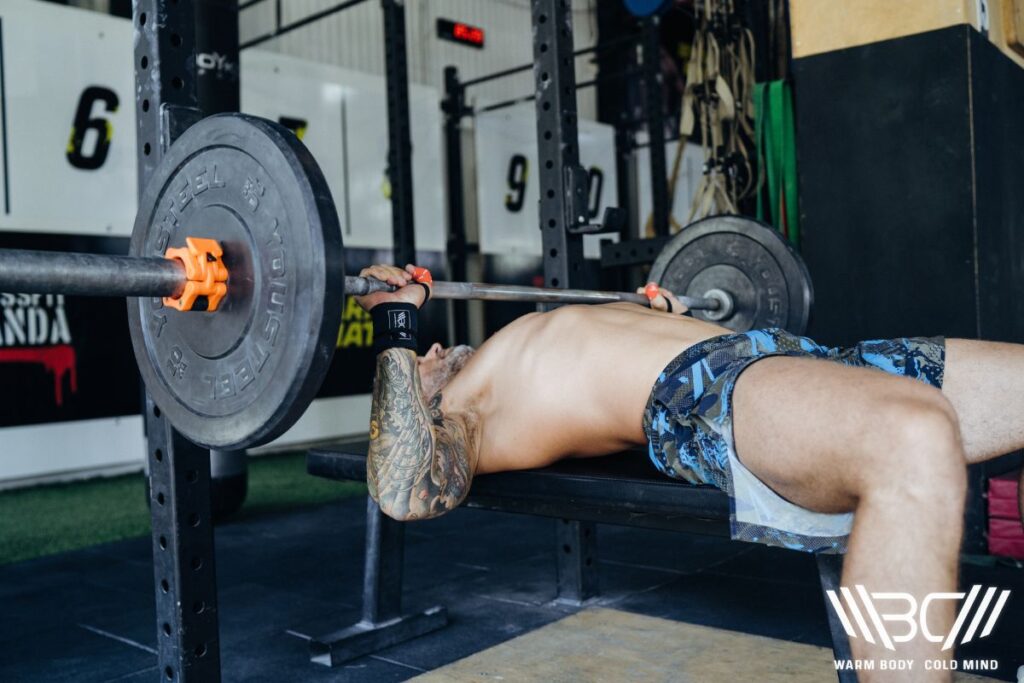
2. Use The Knurling
Olympic and powerlifting barbells have knurl markings on them. Once you find your ideal grip width, the markings should serve as a guide for your hands. Plus, since professional barbells are standardized in size, you won’t need to retake your measurement when you change up where you train.
3. Use Wrist Wraps
Wrist wraps are supportive bands worn around the wrists during weightlifting or other strenuous activities. By wrapping around and compressing the wrist joint, they help limit excessive movement and provide extra support to the wrist, resulting in more robust grip. This reinforced support reduces the risk of overextension or hyperflexion during exercises like bench presses, overhead presses, and other heavy lifts.
Competitive powerlifters use them often, and there’s no reason not to train like a pro – but… Earn it first – Training hard is a privilege, not right. By reducing unwanted movement and providing reinforcement, wrist wraps can help enhance wrist strength, stability and hand integrity while also reducing the risk of injury.
One study looking at the effects of wrist wraps on shot put athletes found that those who wore them threw longer distances, suggesting an overall increase in performance. However, it’s important to mention that, while wrist wraps can be helpful, they shouldn’t be solely relied on for wrist strength.
All athletes, but especially beginners, should still aim to train raw to naturally develop wrist strength and resilience, only turning to wrist wraps when it’s needed like attempting heavy lifts beyond their usual training weight. Training raw might be also a good indicator of your wrist state and health, allowing you to see possible issues requiring your attention.
We Recommend – Warm Body Cold Mind Cotton Wrist Wraps
The Warm Body Cold Mind cotton wrist wraps were designed from first-hand experience in top-level competitive weightlifting. They’re made from an all-natural cotton combined with nylon lining to provide durability and elasticity. The material is soft and doesn’t absorb sweat, protecting the skin underneath from the heat of your workout.
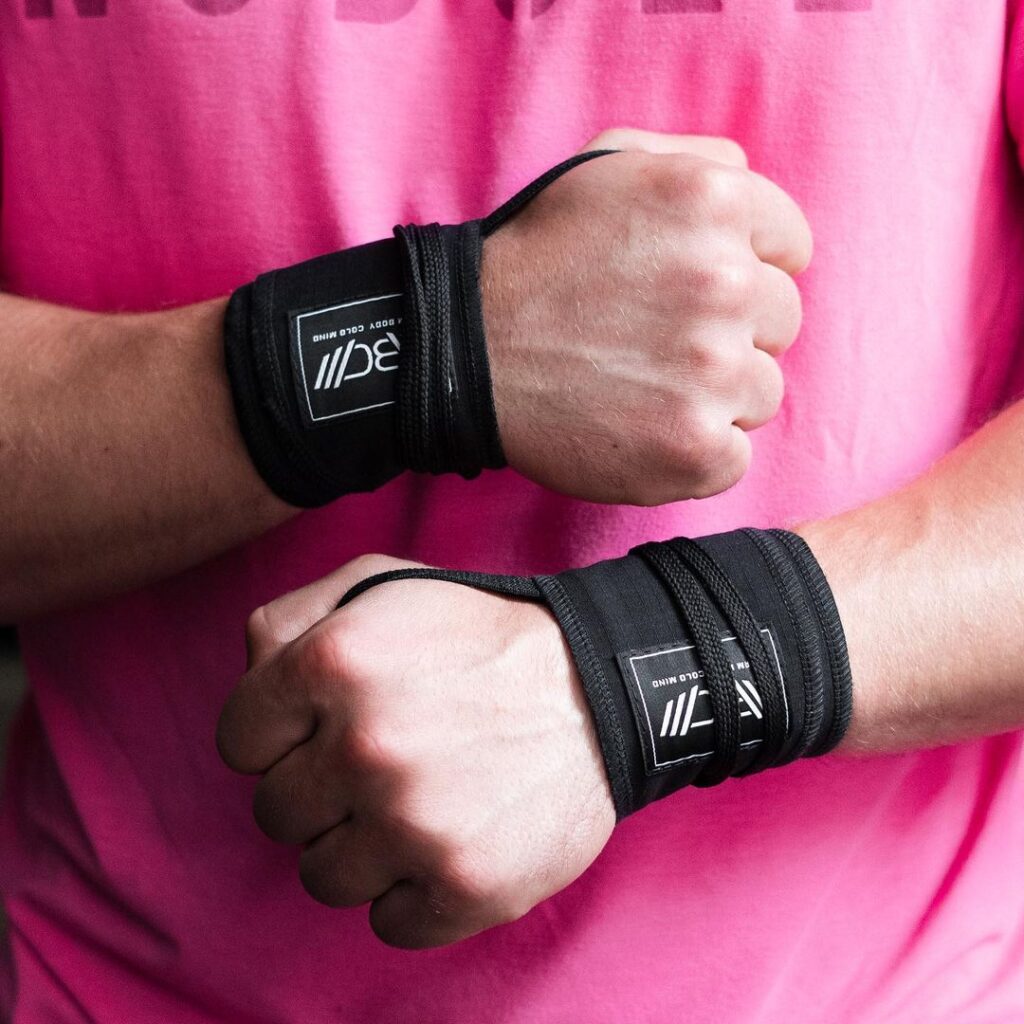
The wraps feature a thumb loop for added support to your wrist. Plus, a cotton string wraps around them to secure them in place — much more comfortable and durable than poorly made velcro typical on wrist wraps. The design is unisex, with multiple color combinations to choose from. Moreover, they come in pairs at a competitive price, giving excellent value.
Exercises & Drills To Improve Your Bench Press Wrist Positioning
The bench press is a compound exercise, meaning many parts are moving at once. As they say, a chain is only as strong as its weakest link. Many people find their bench press fails at the wrists, way before they feel fatigued in the arms or chest. These next exercises and drills should help you improve your wrist health, which will translate to better bench press wrist placement.
1. Wrist Stretches
Regularly stretching your wrists in your spare time is a great way to release tension built up from other activities. Studies have shown that self-stretching your wrist is an effective way to prevent and deal with common wrist issues such as Carpal Tunnel Syndrome (CTS).
However, it’s important to mention you shouldn’t stretch your wrists right before benching to avoid stretch-induced strength/power loss. Nevertheless, here are some easy and effective wrist stretches to do in your spare time that help keep your wrist mobile:
- Prayer – put your palms together at chest level and lower them down without breaking contact until your elbows are parallel to the ground. Hold for 30-60 seconds for 2-4 times.
- Upside-down Prayer – put your palms together at chest level, then flip them upside down so that your fingers point to the ground. Raise your hands towards your chest without losing contact between your palms until your elbows are parallel to the ground. Hold for 30-60 seconds for 2-4 times.
- Wrist Extension – raise your arm in front of you parallel to the ground with your palm facing down. Use your other hand to gently bend your wrist backward and up, without moving your arm or bending your fingers. Hold for about 15-30 seconds, repeat 2-4 times.
- Wrist Flexion – same as extension except you’re going to bend your wrist forward and down instead of backward and up. Hold for about 15-30 seconds, repeat 2-4 times.
- Wrist Rotation – Use one hand to grab the other beneath the wrist to isolate it from movement. Then simply rotate the hand at the wrist for 15-30 seconds in one direction, then the other. Repeat 2-4 times.
2. Grip Balls
Grip balls are a simple and effective way to improve grip strength and dexterity. When you squeeze a grip ball, it engages the muscles in your hand and forearm, including those responsible for wrist movement. Exercising these muscles can contribute to better wrist function and stability.
3. Dumbbell Wrist Rotations
Wrist rotations while holding a light dumbbell are one of the highest-recommended wrist strengthening exercises. Start by holding a dumbbell in your hand. Then, find a solid surface to rest your arm on, a table or weight bench should suffice. Place your arm from the elbow down on the solid surface, with your fist hanging off the end to allow for free movement.
Now, simply rotate the wrist. Use a variety of movement directions, including both pronation and supination & and inward and outward rotation. Aim for 2-3 sets of 10-15 reps if your wrists can handle it. If you feel too much pressure, don’t hesitate to lower this number or choose lighter weight for now until your wrists get stronger.
4. Barbell Rolling W/ Kettlebell
For this exercise, you’re going to need a racked barbell, a resistance band, and a kettlebell (or dumbbell). First, tie one end of the resistance band around the kettlebell handle and place it on the floor next to the rack.
Next, tie the other end around the barbell sleeve on either side. The kettlebell should be hanging from the barbell sleeve by the resistance band (good idea is to put the same weight plate on the other side of the barbell to balance it 🙂).
With the kettlebell hanging, grip onto the barbell sleeve with your hands and start rolling it toward you, thus pulling the kettlebell up. Roll it back down and repeat the process, this time rolling it away from you. Repeat 2-3 times for 2-3 sets or as long as needed for progress.
5. Push-Ups
Push-ups are another popular upper-body exercise. What’s more, studies comparing the effects and anatomy of push-ups and bench presses have concluded that the two exercises can be used interchangeably if similar conditions are met. From this, we can conclude that adding push-ups to your workout routine might strengthen your bench press as well.
The knuckle push-up variation in particular is a good way to improve wrist strength, so it’s a welcome addition to any bench preparation workout. If you find the pressure on your knuckles to be too high, place a pair of dumbbells or use push-up bars to assist you.
FAQ
Is It Better To Bench Press With Straight or Bent Wrists?
It’s always better and safer to bench with a neutral wrist. Bending your wrists too much should be avoided if possible. Too much bent wrist or a fully straight one is a shortcut to exercise failure and subsequent injury.
What’s The Best Grip For Bench Press?
The best bench press grip involves the palm fully closed around the barbell, with the thumb providing support from underneath, while the remaining fingers wrap securely over the top. The grip should also be firm, preventing the barbell from rolling around in the palm.
Should Your Wrist Be Bent a Bit When Benching?
Ideally, your wrists should be in a neutral position. A neutral position prevents unnecessary stress on it. Wrist shouldn’t be fully straight because then you will basically hold barbell on your thumbs (if you want, check YT – bench press fails – to see what we are talking about)
That said, anatomy varies from person to person. For example, people with smaller palms may need to bend their wrists a bit more to get a firm grip on the barbell.
Why Do My Wrists Hurt While Bench Pressing?
There could be a few reasons why your wrists hurt when benching: They could be misaligned or bent in such a way that creates too much pressure on them. Readjusting your grip should help solve the problem.
That said, if your wrists hurt well after you’re done with the exercises, you should consult a physical therapist or doctor, as there’s a good chance you have an injury (sprain, strain, fracture, etc.) or some health condition that needs addressing.
Conclusion
Now you understand how the proper bench press wrist position affects your exercise. As a reminder — proper hand placement for bench press includes: grip spread roughly 1.6-2x your shoulder width, elbows positioned between 45 and 70 degrees from your sides, arms moving simultaneously up and down from your chest, and neutral wrists.
If you can’t maintain a neutral wrist when benching and your barbell keeps rolling back, you’re likely pushing yourself too hard — so lower the weight, at least for now. When pros who lift Heavy have this problem, they often turn to wrist wraps to stabilize their joints. Give them a try, especially if you’re doing heavier lifts.
We’d also like to hear from you. Do you bench press often or plan on doing so in the future? Also, which information did you find particularly useful/interesting? Let us know by leaving a comment and remember to follow our social media pages for more fitness content.
References:
- “Anatomy of the Hand and Wrist,” Cleveland Clinic, https://my.clevelandclinic.org/health/body/25060-anatomy-of-the-hand-and-wrist (accessed Nov. 7. 2023)
- Dillon Harris, Thomas Cardaci, Harry Cintineo, Richard Pham, Kristen A. Dunsmore, “The Prevalence of Wrist Wrap Use in Actively Competing Powerlifters,” International Journal of Exercise Science: Conference Proceedings 2, no 14 (2022), Article 149
- Joaquin Calatayud, Sebastien Borreani, Juan C. Colado, Fernando Martin, Victor Tella, Lars L. Andersen, “Bench press and push-up at comparable levels of muscle activity results in similar strength gains,” Journal of Strength & Conditioning Research Vol. 29, No. 1 (2015), 246-53
- Kazuko Shem, Joseph Wong, Benjamin Dirlikov, “Effective self-stretching of carpal ligament for the treatment of carpal tunnel syndrome: A double-blinded randomized controlled study”, Journal of Hand Therapy 33, no. 3 (2020), 272-280,
- Loree L. Wagner, Sharon A. Evans, Joseph P. Weir, Terry J. Housh, Glen O. Johnson, “The Effects of Grip Width on Bench Press Performance,” International Journal of Sports Biomechanics 8 (1992), 1-10
- W. Lawrence Judge, M. Jeanmarie Burke, J. Tiffany Patrick, D. Tyler Guidry, L. Donald Hoover, A. Elizabeth Wanless, M. David Bellar, “Effects of Wrist Wraps on Throwing Distance in Highly Skilled Shot Put Athletes,” International Journal of Performance Analysis in Sport 15, no. 1 (2015), 343-358.
Author: Sergii Putsov
PhD in Sport Science, Olympic weightlifting, Strength & Conditioning coach and fitness expert
Sergii Putsov is a professional weightlifter with over 20 years of experience and multiple national medals. He was a member of the National weightlifting team, competing in the 94 kg weight class. Sergii holds a master’s degree in Olympic & Professional Sport Training and a Ph.D. in Sport Science. After his athletic career, Sergii transitioned into coaching and is now responsible for designing training programs, writing blog articles, providing live commentary for international weightlifting competitions, and hosting sport and fitness seminars worldwide.

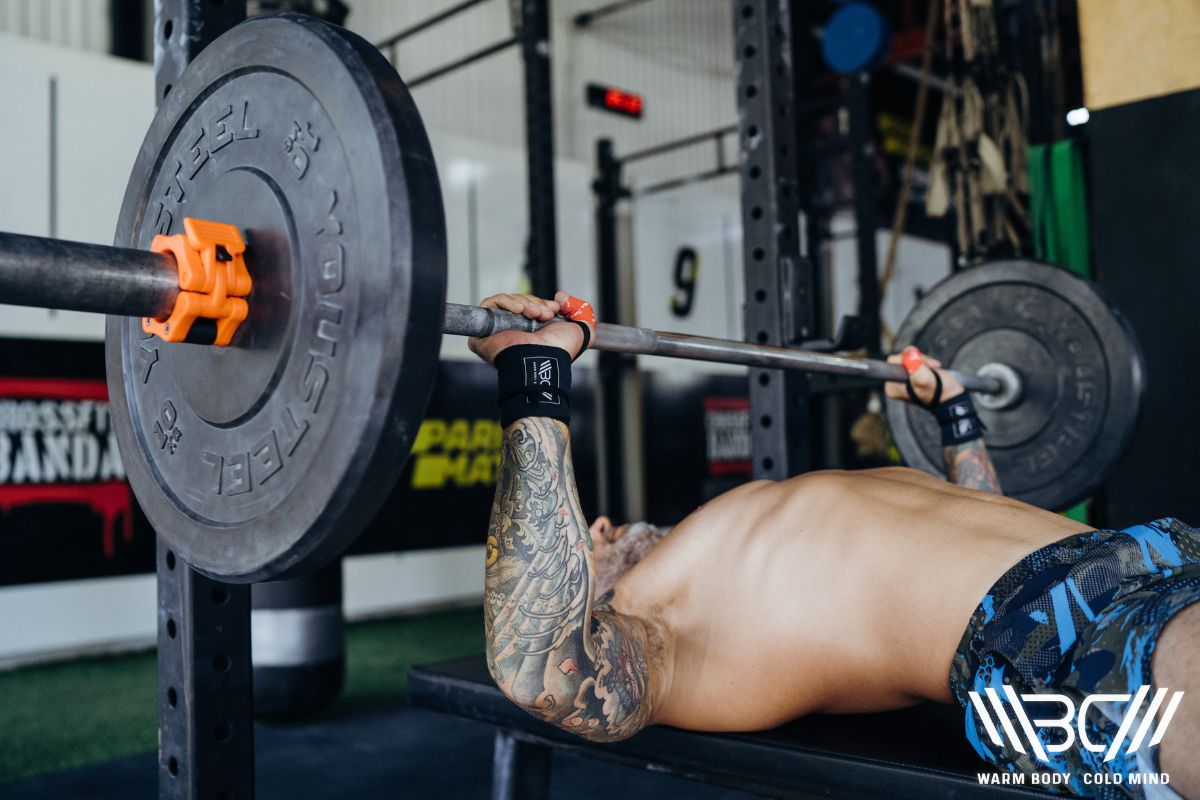
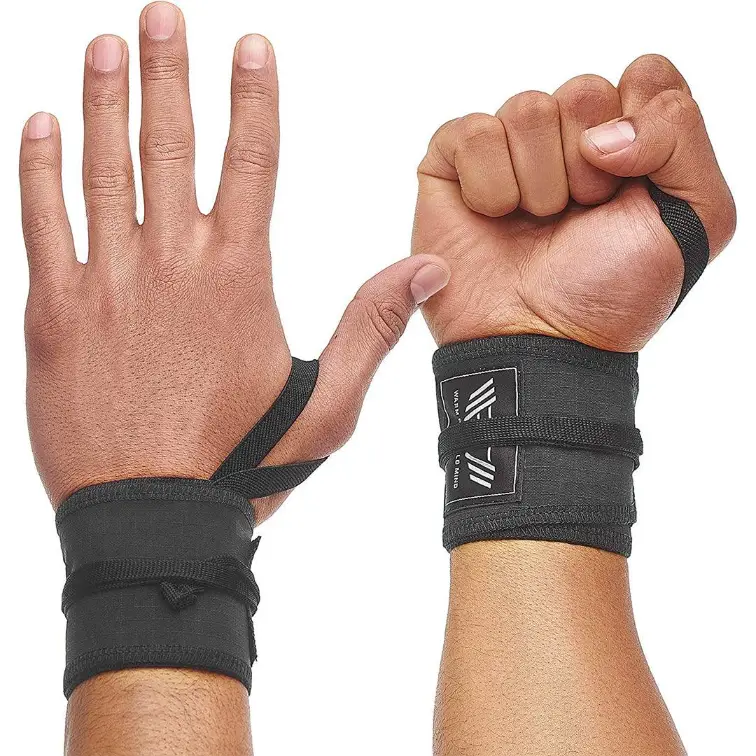
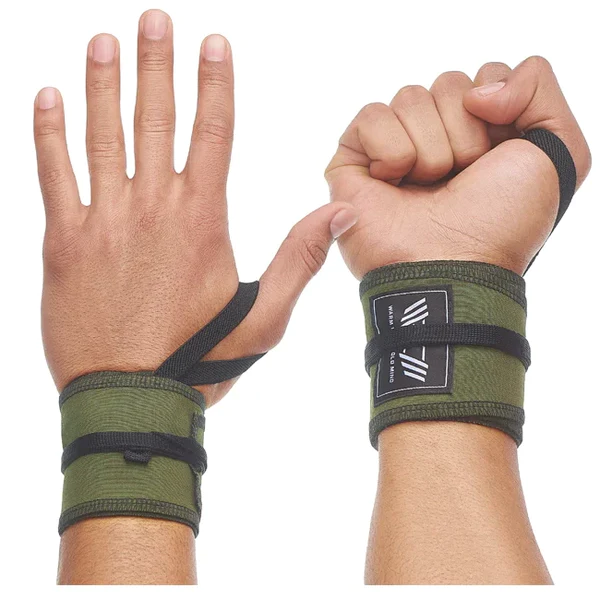

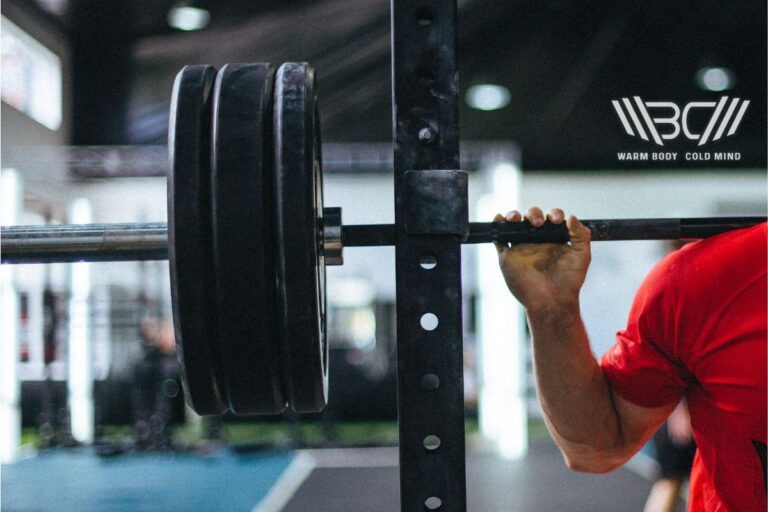
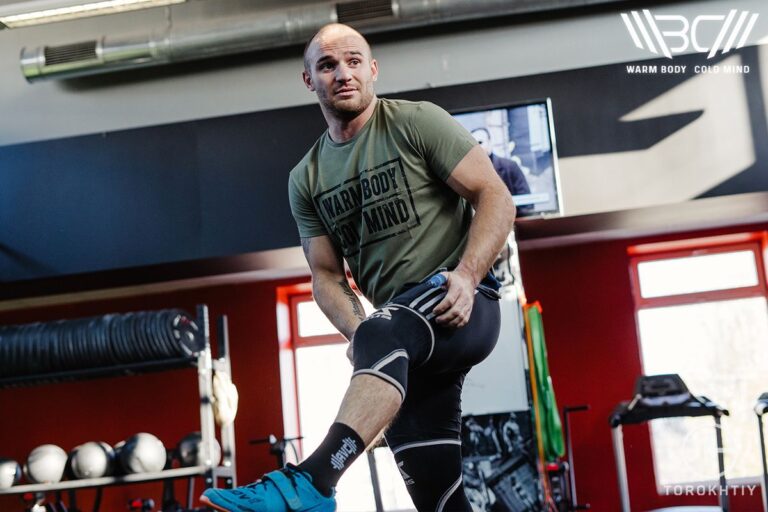

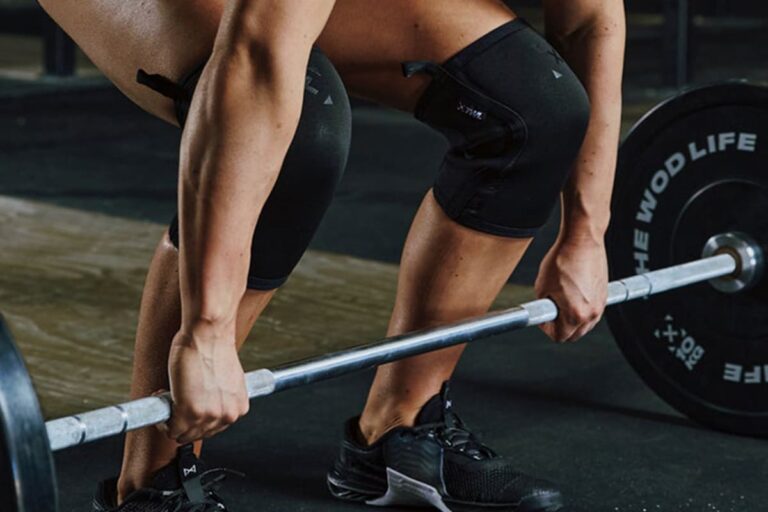
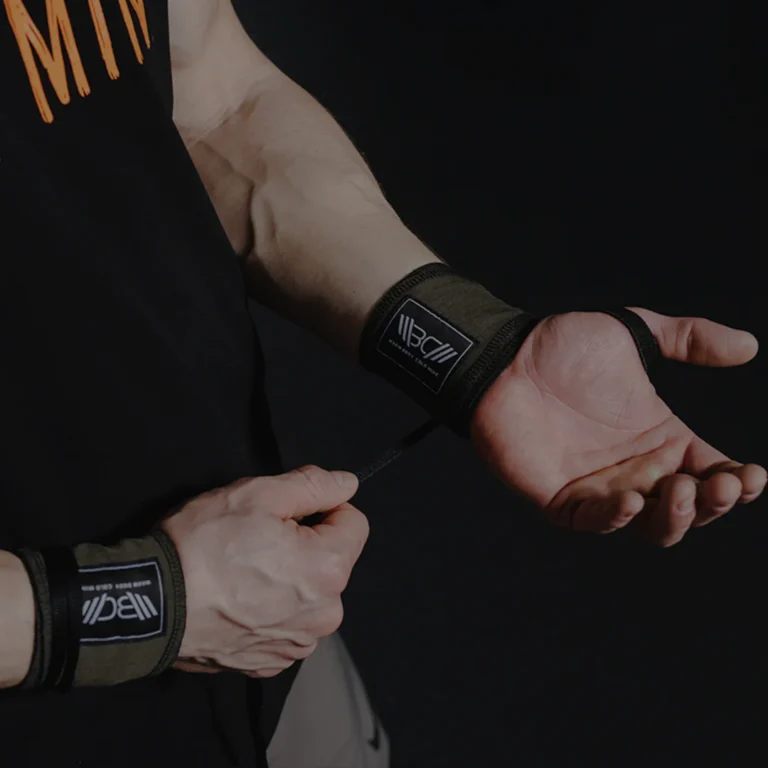
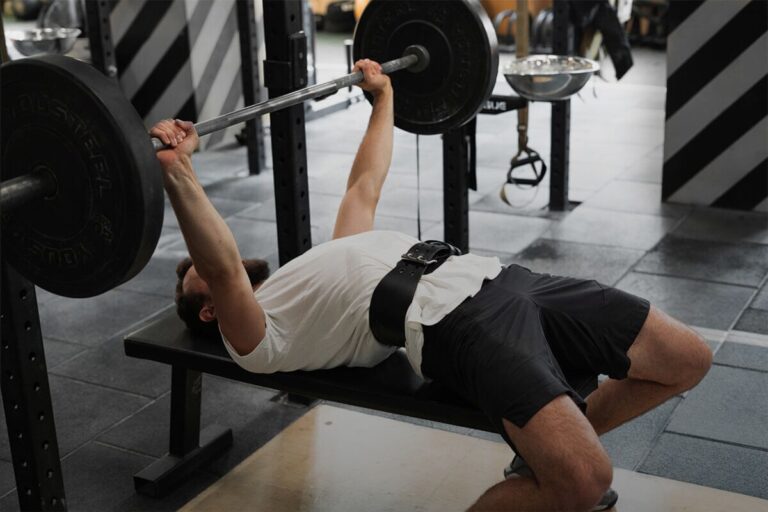
Great information, very detailed and qualitative description of what the wrist position should be for bench press and what mistakes should be avoided… really enjoyed reading this post, thanks to the author.
A very detailed article with valuable information for a beginner on wrist when benching. It’s good that you described the different options, focusing on wrist positioning to improve performance and safety. I also found these videos helpful, and it’s good that you added them for a visual example.